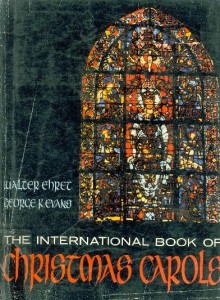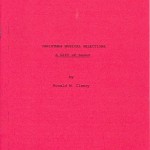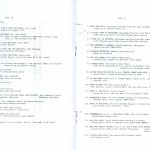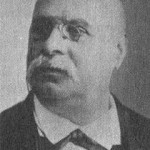Christmas Classics PERSON OF THE DAY: William Chatterton Dix
On this day in 1898, William Chatterton Dix died in Cheddar, Somerset, England. He was bequeathed the middle name of Chatterton in honor of Thomas Chatterton, a poet whose biography was penned by Dix’s father. For a better part of his professional life Dix was a marine insurance agency manager, yet he is best known as the Christmas carol composer of the English carols What Child Is This? and As with Gladness Men of Old.
The insurance executive always nurtured a great love for poetry and hymns. His interest in both was accentuated at the age of twenty-nine when a near fatal illness and severe depression confined him to bed for months. It was also during this period when Dix wrote most of the forty hymns credited to him, including his most popular carol What Child Is This?
The lyrics for What Child Is This? were initially part of a six-stanza poem titled The Manger Throne. Dix later took three of the poem’s stanzas and adapted them to the popular 16th-century tune of Greensleeves. In 1871 both text and tune, the latter arranged by John Stainer, were published in Bramley & Stainer’s Christmas Carols, New and Old, a widely circulated compilation.
The beautiful folk melody of Greensleeves dates from Elizabethan times, perhaps even earlier, and reputedly it had less respectable lyrics sung to it in several lyrical settings. One of the earliest references to it was in 1580, and it was twice mentioned in Shakespeare’s comedy play, The Merry Wives of Windsor. In the 1642 New Christmas Carols black-letter edition, a variant tune of Greensleeves was used in the carol The Old Year Now Away Is Fled. Strains of the melody were also heard in John Gay’s 1728 satirical ballad opera, The Beggar’s Opera.
The providence of history is such that Greensleeves might be much lesser known if not for a strange illness that befell William Chatterton Dix. His effort to string religious pearls from his lengthy The Manger Throne, and the sometimes less respectable Greensleeves tune, ultimately prove successful with the issuance of What Child Is This? Since its 1871 publication, the beloved carol has been sustained by repeated publication and acclaim for its reverential treatment of the Nativity theme.
Christmas Classics PERSON OF THE DAY: George K. Evans
On this day in 1917, George K. Evans was born in Arkansas. He is most noted as a translator and co-author of the highly respected The International Book of Christmas Carols published by Prentice-Hall in 1963 and reprinted in 1980 by S. Greene Press.
Evans was responsible, along with colleague Walter Ehret, for including in The International Book of Christmas Carols many carols theretofore never published in English collections, especially Slavic, Scandinavian, and Spanish carols. Evans himself provided the notes and translations for most of the carols, as well as for the popular German carol O Tannenbaum. In addition he wrote a fine seven page introduction to the book.
Fifteen years ago I spoke with the retired co-author about The International Book of Christmas Carols. He was quite proud of his contributions, and rightfully so I told him, but expressed disappointment that the book wasn’t more aggressively marketed. When I hinted that most carol books generally do not have large print runs, Evans ever the gentleman concurred. When I further commented that I thought his oeuvre d’ hors was one of the finest 20th century carol collections, he was greatly pleased for the attention.
George K. Evans died at his home in North Hollywood, California in 2003. He will always be remembered and honored here as a significant contributor to the international Christmas music repertoire.
Christmas 1988 Starts Me on the Yellow Brick Road
In 1988 I thought it would be a neat idea to share the riches of my Christmas music collection. So for Christmas I gift-wrapped four audio cassettes of the finest recordings from my collection and gave them to family and friends. Each gift collection was accompanied by an 8-page type-written directory with a Chinese red cover titled “A Gift of Sound.” Besides having a decorative, though primitive look, the directory of song titles was intended to be easier on the eyes than my barely legible long-hand. Just imagine writing the same information on cassette index cards four times twelve, or forty-eight total! The thought was enough to give me writer’s cramps. My quaint IBM Selectric II typewriter, however, saved me the trouble and as a result the directory included not only selection titles, but also brief liner notes that sometimes indicated the origin of each carol, holiday song, or instrumental piece.
Some of my friends included those of the Jewish faith married to Christian partners. They admitted that although they usually felt left out at Christmas, they were indeed appreciative of my eclectic Christmas music gift. What made the collection special for most was the quality of the music. Quite unlike what they were accustomed to hearing during the holidays, it encompassed Gregorian chant, once the Christmas music of its day, and such classical pieces as "Anima Nostra,” Bach’s “Christmas Oratorio,” the German motet ""Hort zu lieben Leute," and the Spanish villancico, "Riu, Riu, Chiu” just to name a few. The collection was rounded out by lyrical English carols from the 16th and 17th centuries, and better known traditional fare, particularly carol hymns as "O Come, O Come Emmanuel” and “Adeste Fidelis,” or classic holiday songs as “White Christmas,” and “The Christmas Song.” In all, the four cassette collection totaled one hundred and twenty-four titles. Most came from England, France, Germany, and the United States. Entries from Austria, Czechoslovakia, Poland, Italy, and Sweden were also part of the mix. By the end of the 1988 Christmas season I was being encouraged by several friends to do something about my great interest in Christmas music, suggesting that I should pursue my interest and take advantage of my college degree. This I did. And in 1989 I was on my way.
SPECIAL PERSON OF THE DAY – Émile Waldteufel (December 9, 1837 – February 12, 1915)
The composer of Les Patineurs, Op. 183, Émile Waldteufel died in Paris and is buried at Cimetière du Père Lachaise there. The composer was born in Strasbourg, France to a Jewish Alsatian family of musicians. In 1882 he composed the best-known waltz of his career – Les Patineurs (a.k.a. "The Skaters’ Waltz" in English). Inspired by the Cercle des Patineurs, or "’Rink of Skaters’ at the Bois de Boulogne in Paris, the waltz has since been played in various venues, from concert halls to movies such as The Hollywood Revue of 1929 and Chariots of Fire, to music games like Gamecube’s “’Dance Dance Revolution Mario Mix” and Arc System Works’ “Princess on Ice.”
Waldteufel’s famous waltz evokes wonderful imagery: a poised skater gracefully gliding along the ice and swirling about a ring of other skaters as part of the wintry atmosphere. The delightful music includes the sound of bells that adds a nice touch to the outdoor scene. The noted conductor Arturo Toscanini led the NBC Symphony Orchestra on January 28, 1945, at Carnegie Hall, New York, in a fine RCA Victor recording of Les Patineurs
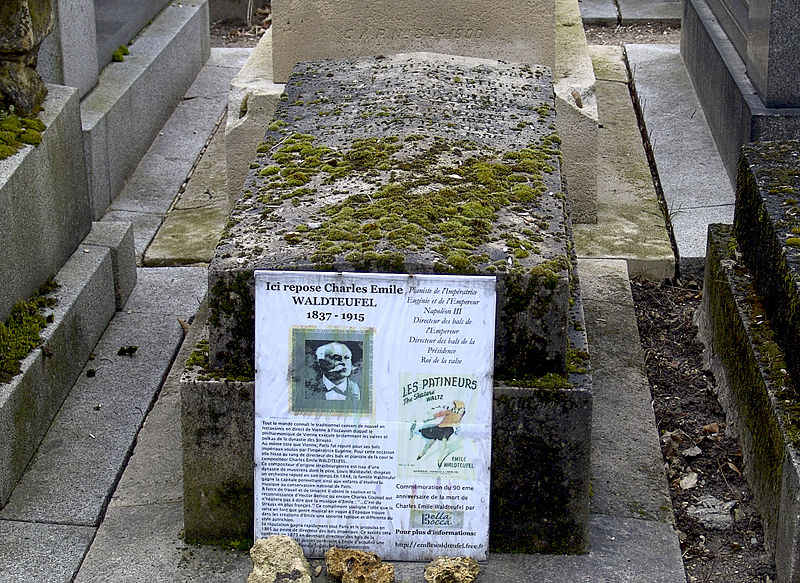
Grave of Émile Waldteufel

